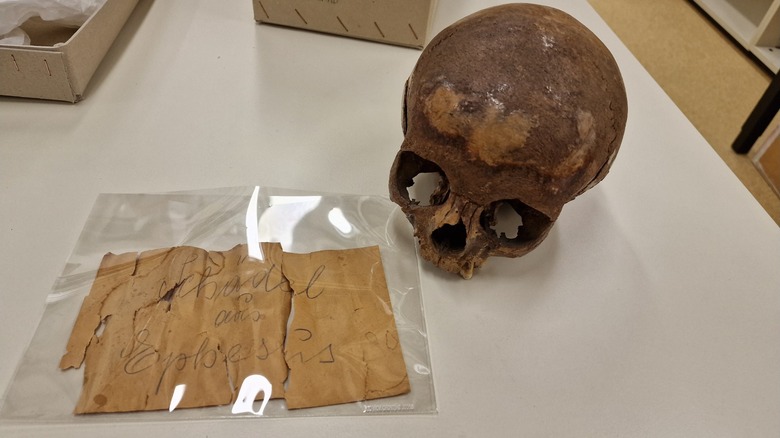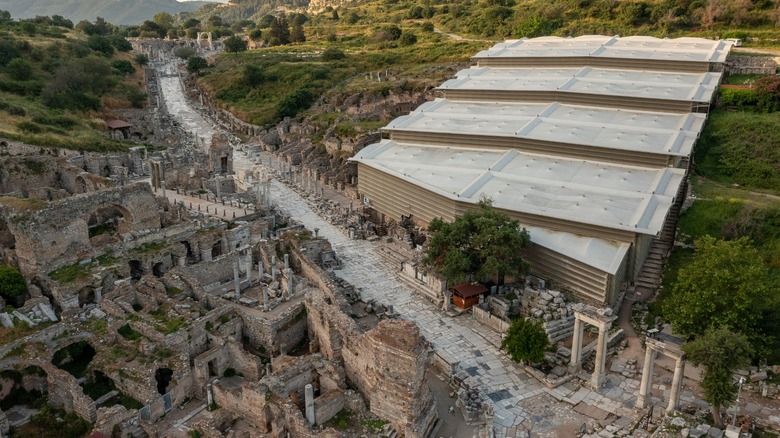DNA Tests Revealed Skeleton Of Cleopatra's Family Member Isn't Who Researchers Thought
Ancient Egypt was one of the most innovative civilizations, and it still influences the world today. For instance, its people were prolific writers and amazing engineers, utilizing the mining resources in ancient Egypt to construct remarkable pyramids and temples. Several of the civilization's pharaohs have become infamous, particularly Cleopatra VII Thea Philopator, who was so ruthless in her pursuit of power that she even had her younger half-sister, Arsinoë IV, executed. Nearly a century ago, archeologists believed that they found the sister's remains, but modern DNA analysis says otherwise.
Led by University of Vienna anthropologist Gerhard Weber, a team of archeologists from the Austrian Academy of Sciences worked with a team of dating specialists, geneticists, and orthodontists from the University of Vienna to determine whether or not the remains were actually those of Arsinoë IV as previously believed. In a paper published in Scientific Reports, they explain that the cranium and skeletal body (retrieved separately) were from the same person, but that person was not a female. Instead, the presence of a Y chromosome determined the sex of the individual as male. The combination of analyses, which included high-resolution imaging, helped the team conclude that the boy "suffered from significant developmental disturbances" and was between 11 and 14 years old at the time of death sometime between 205 and 36 B.C.
Why archeologists thought the remains were Arsinoë's
The belief that these remains were Arsinoë IV was the result of several assumptions. First, the cranium was originally found by Austrian archeologists Josef Keil and Max Theuer in 1929 in a marble sarcophagus (one of many types of resting places for the dead in ancient Egypt) in the ruins of the Octagon, a once magnificent building in Ephesus (now Turkey), a vital Greek city. Keil's original analysis, which lacked hard data, suggested that the skull belonged to a distinguished person around 20 years old. Then, further analysis by the head of the Institute of Anthropology at the University of Vienna, Josef Weninger, concluded that the cranium came from a young, refined woman.
Thirdly, some of the postcranial remains weren't rediscovered until 1982, and an examination wasn't carried out until Hilke Thür went back to the tomb in 1993. Then, more remains were found in 2007. As of 2009, the postcranial remains were still being treated as a separate individual from the cranium and thought to be from a female between the ages of 15 and 17 who died between 210 and 20 B.C. This estimate coincided with the 41 B.C. execution of Arsinoë IV, which was ordered by Mark Antony at the behest of Cleopatra herself for leading a failed siege against Alexandria between 48 and 47 B.C.
While the timeline was roughly accurate, a lack of conclusive DNA evidence led to assumptions that the remains were Arsinoë IV. With the new, confirmed findings, a search for the real remains can continue, as can research into why a boy with ancestry from Italian island Sardinia or the Italian peninsula was buried in such a prominent Greek building.

